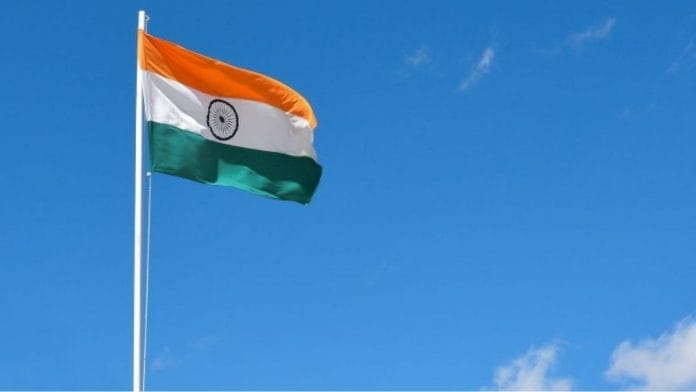Thank you dear subscribers, we are overwhelmed with your response.
Your Turn is a unique section from ThePrint featuring points of view from its subscribers. If you are a subscriber, have a point of view, please send it to us. If not, do subscribe here: https://theprint.in/subscribe/
Padma Bhushan Bibek Debroy would be disheartened in today’s Delhi, a city that has ordered stray dogs out of sight. In his home, they were always welcome; some stayed behind, becoming family. It was this affection that once drove the giant of Indic thought to explore the cultural arc of the stray dog—sarameya, progeny of Indra’s celestial hound, Saramā—from pre-Vedic times to the 2000s.
Saramā and Her Children showcases a scholarly force seen in his translations of the Vedas, epics, and Purāṇas. Though grounded in Sanskritic tradition, the works speak to readers across backgrounds. They bring forth a civilizational ethos, Bharatiyata, rooted not in social identity but in values woven into everyday practices, surroundings, and often overlooked moments. They show that animals have always shared space in our stories, symbols, homes, and hearts.
It’s no surprise, then, that a world which prizes dominance over balance often misunderstands these values. Harmony is mistaken for complacency, and restraint for weakness. Even the practices that connect us with nature are dismissed as tribal rituals.
The Growth Story
But India asserts itself on the world stage today, and Viksit Bharat — a developed India — promises equity, opportunity, health, and security: hallmarks of progress. Our future unfolds before us with thousands of cities and towns rising together, interconnected by world-class metros, expressways, railways, and airports. We’ll stand tall among leading nations.
Yet for all the heights we are reaching, the very symbols of our values are vanishing.
A personal experience involving my companion animal revealed the deep apathy of enforcement agencies and civic authorities: unwilling, unequipped, and powerless under law. This isn’t an isolated case. The systemic indifference fuels the abuse and suffering of community animals on our streets, leaving feeders and caregivers to fight lonely, painful battles. Often, the animals vanish without a trace. Justice is rarely pursued, while many walk away scarred by trauma.
This, however, isn’t about a single system. It’s a larger question. In a rapidly developing India, do animals still belong at the heart of society?
Our Shared Story
Our civilization says yes. Panchatantra and Buddhist Jataka tales reveal how animals and humans co-inhabited here. Sikhs believe in seva to all beings. Zoroastrian scriptures devote a chapter to the praise and welfare of dogs. Pairings of vahanas with Hindu deities show that animals aren’t just accessories — they co-occupy our lives, responsibilities, and conscience.
We are a complex society. Common folk struggle to make ends meet, yet happily share their lunch with strays. Millennia before our duty to compassion was mandated, the very first roti for community animals was kept aside during its preparation — a practice still alive in millions of homes.
We did not invent “animal rights”. Animals already belonged in civic life, respectfully included. But nowadays, we no longer see animals as co-inhabitants; only inconveniences, nuisances, roadblocks. Impediments to progress, in need of relocation to “anywhere but here”. And institutions that must uphold compassion enshrined in the Constitution — municipal corporations, enforcement agencies, and statutory animal welfare boards — are silent spectators.
Bharatiyata honours inclusion and demands accountability, even for the voiceless. And it’s confronting us with an unsettling dilemma:
Do we sacrifice our animals for us to become “developed”? Or do we create a model of development where animals and humans can coexist?
A stray dog doesn’t need a highway. But she needs a human who remembers that Saramā and her children once walked here with the Gods.
An Opportunity
Development should not stall or suffer, but its definition must urgently expand to include animals.
Expanding the definition could launch a cohesive national mission for urban animal inclusion, embedding mandates into every city’s blueprint. Departments of urban planning and development could go beyond concrete and glass, and reweave our oldest neighbours into the urban fabric through animal-friendly infrastructure, byelaws, and welfare mechanisms. Animal welfare in school curricula could instil responsibility and raise awareness in future generations. Amrit Kaal calls for inclusive development — targeted funding could support the welfare of these “other creatures”. CSR contributions and citizen participation could power initiatives, as civic duty.
In enabling this inclusion lies a hidden opportunity for our leaders: to innovate and craft the world’s first model of urban development that fully integrates community and companion animals. An unprecedented chance to create a developed nation that even leading countries aspire to emulate.
There is faith — in our laws and our legacy — and a collective hope that our co-inhabitants will be restored to their rightful place in a Viksit Bharat.
Dr. Debroy reminded us of those who walked with us when our roots took hold.
It’s our turn to guard those roots before they’re buried by the silence we trade for development.
Because without Bharatiyata, we may find ourselves living in a developed, but alien nation — a Viksit Parāyā Rāshtra.
These pieces are being published as they have been received – they have not been edited/fact-checked by ThePrint.


